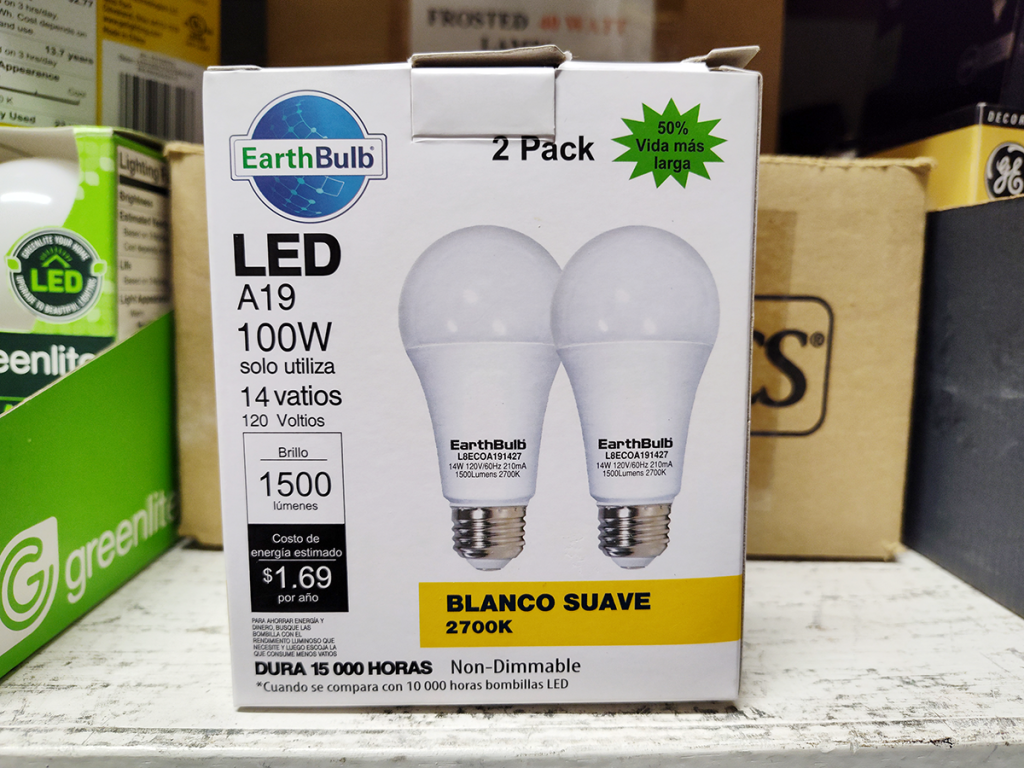
Sure, the other side says soft white, but let’s be honest: blanco suave sounds way, way better.
Discoveries in the Physics & Astronomy shop | Science, curiosities, and surprises

Sure, the other side says soft white, but let’s be honest: blanco suave sounds way, way better.
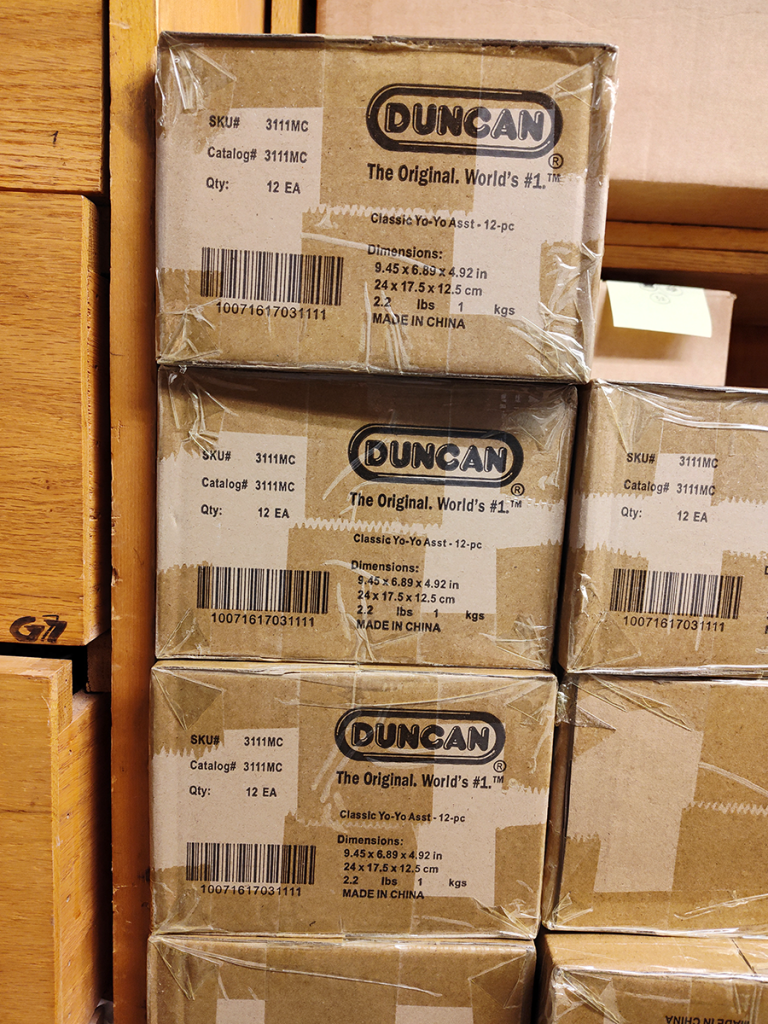
In great big boxes full of boxes, the toys begin to arrive. We stash them in corners, in front of other shelves, any place mostly out of the way before separating, sorting, packing, and distributing.
Three hundred yo-yos, Imperials and Butterflies, in an assortment of colors. Every box is full of surprises!
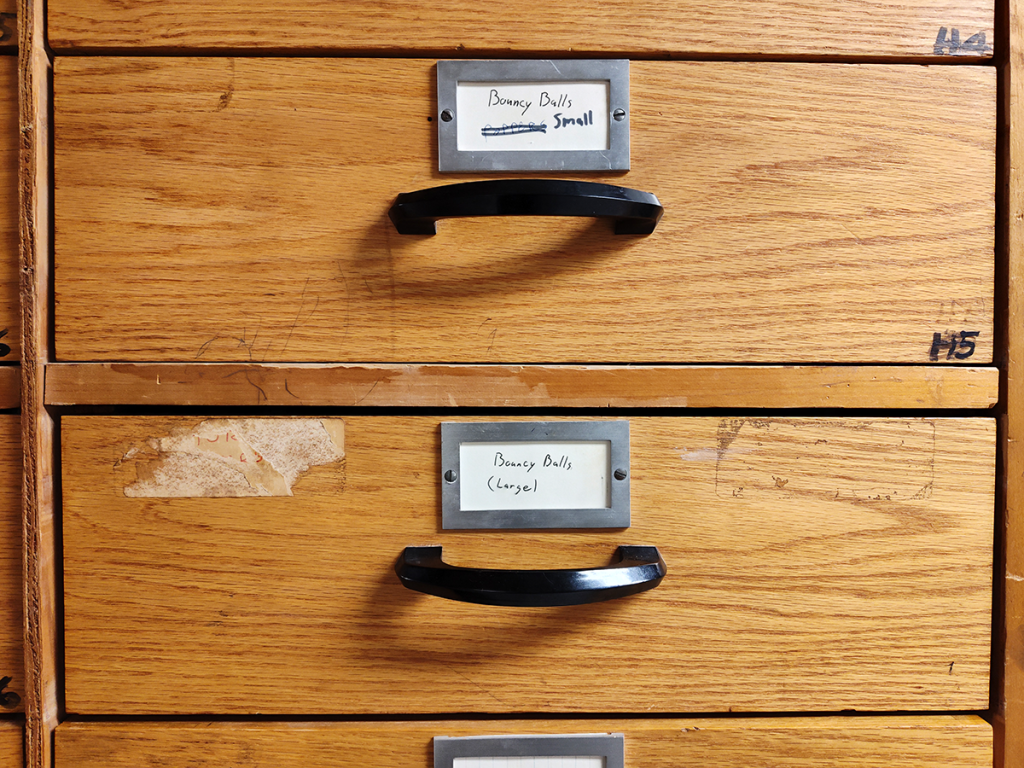
It’s July, and that means it’s the time of year for restocking on toys! Bouncy balls, suction cup blowdart guns, silicone poppers, the works.
This is all for advanced scientific education, mind you. Important stuff, building a better tomorrow, etc.
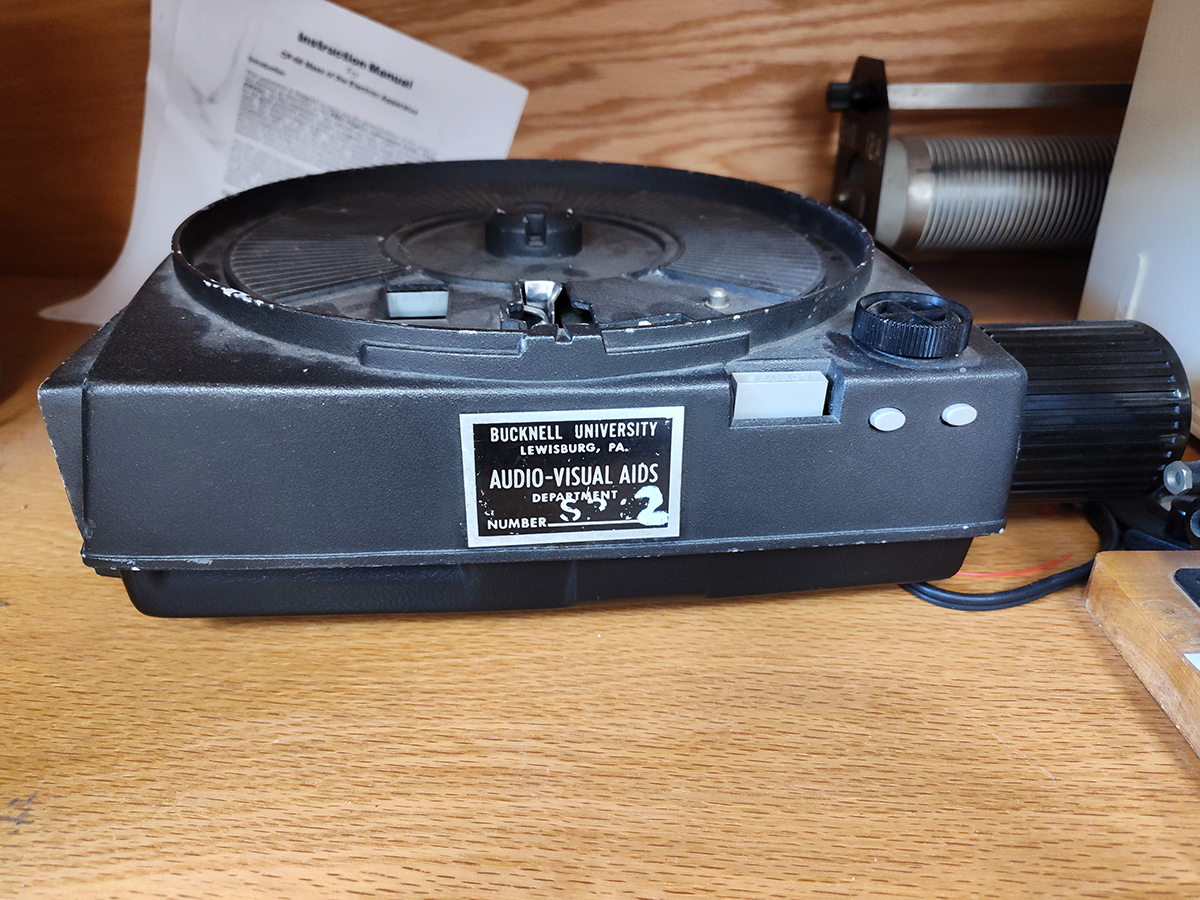
Remember slide film? Carousels and projectors and hauling out the big screen to see those vacation photos? Are you old enough to remember high school and/or college lectures on slides? The shop techs remember.
Nowadays everyone’s much more likely to use Slides than slides, of course. More portable, for the most part. Easier to edit, up until the last moment. Overall, a lot of advantages. But the old-school ones were pretty cool, too.
One can only hope that back in the days of the Audio-Visual Aids Department (we’re assuming they’ve been subsumed into L&IT, but not ruling out the possibility of a now-defunct academic department), they wheeled these – and film projectors, and VCRs, and hopefully LaserDiscs, too – into your classroom space on the classic steel cart. Embedded YouTube clips just aren’t the same.
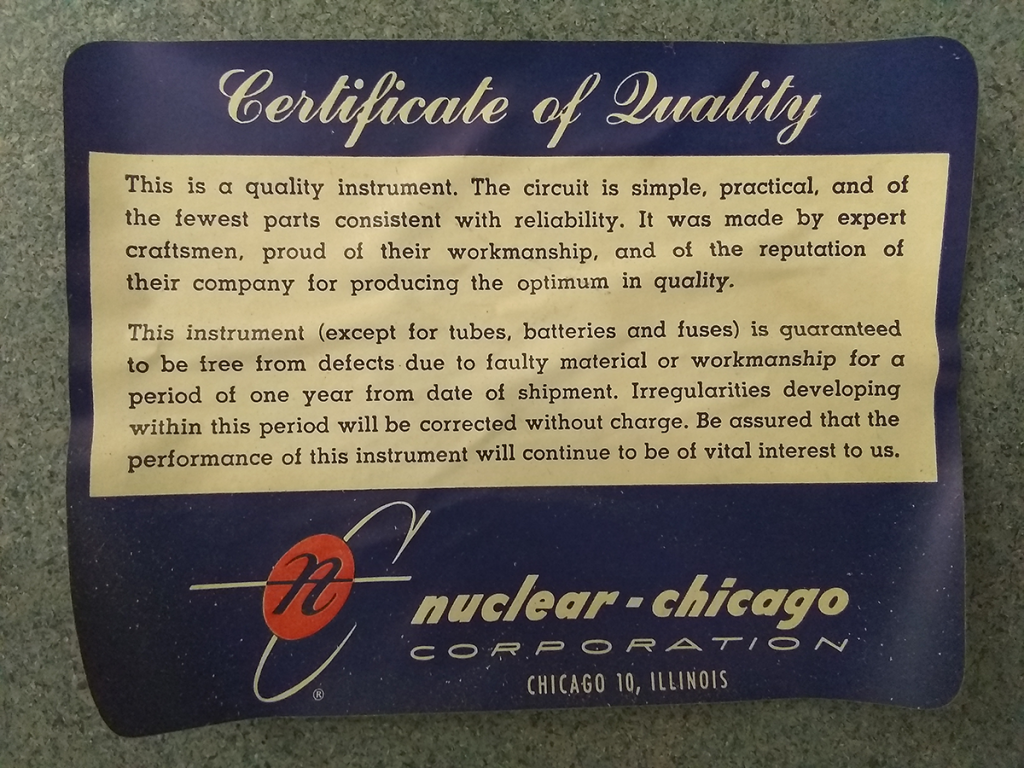
This was a quality instrument, we’re supposing. Currently it’s a steel door, with its associated cabinet, apparatus, and everything else unaccounted for and presumed long gone. Any details associated with it have disappeared as well.
But check out that sticker! The Nuclear-Chicago Corporation made a variety of devices for nuclear radiation detection, although a cursory internet search reveals mostly hand-held items rather than cabinet-mounted equipment. Still, have a look through that fantastic mid-century aesthetic! Back in the days when uranium prospecting was what all the cool kids were doing.
They put out the model 2586 “Cutie Pie” in 1954. The Cutie Pie.
At any rate, Abbott Laboratories bought them out in 1964, so whatever device this accompanied goes back to sometime between 1954 – the name change to Nuclear-Chicago – and the 1964 sale. Should we ever stumble across the remains of it, rest assured we’ll make note of it.
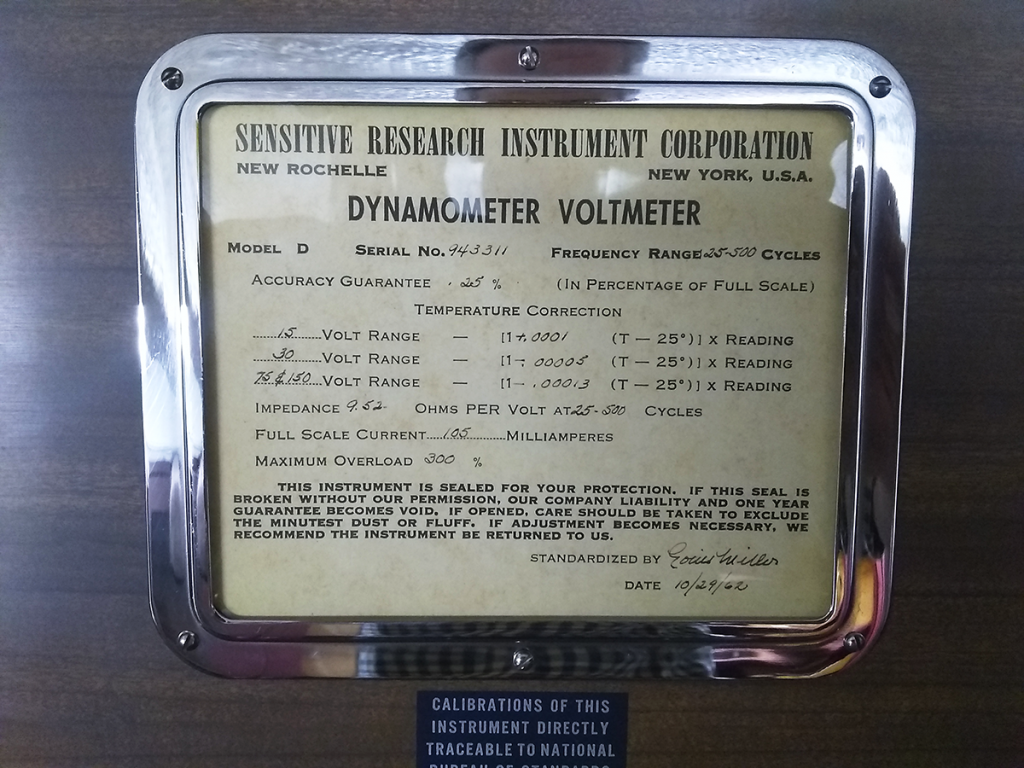
Sometimes you just have to love the directness of the manufacturers of scientific apparatus and equipment. “Sensitive Research Instrument Corporation” is not, by any standards, snappy. But it is clear about their product line.
An accuracy guarantee of 0.25%, standardized by Louis Miller on 10/29/62. Charmingly hand-written on this label affixed inside the case. (Sadly, no one marked this one with the price.)
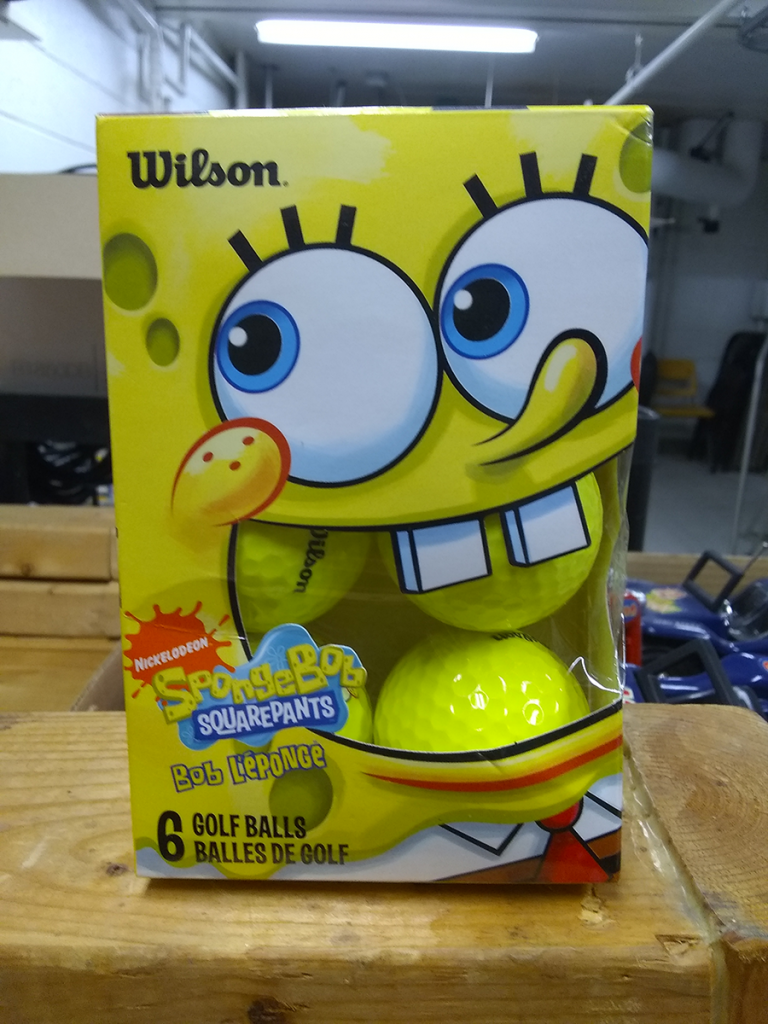
Still in the original box, of course. It’s unclear who the target market is or was for SpongeBob-branded golf balls, and yet here they are. Enjoy?
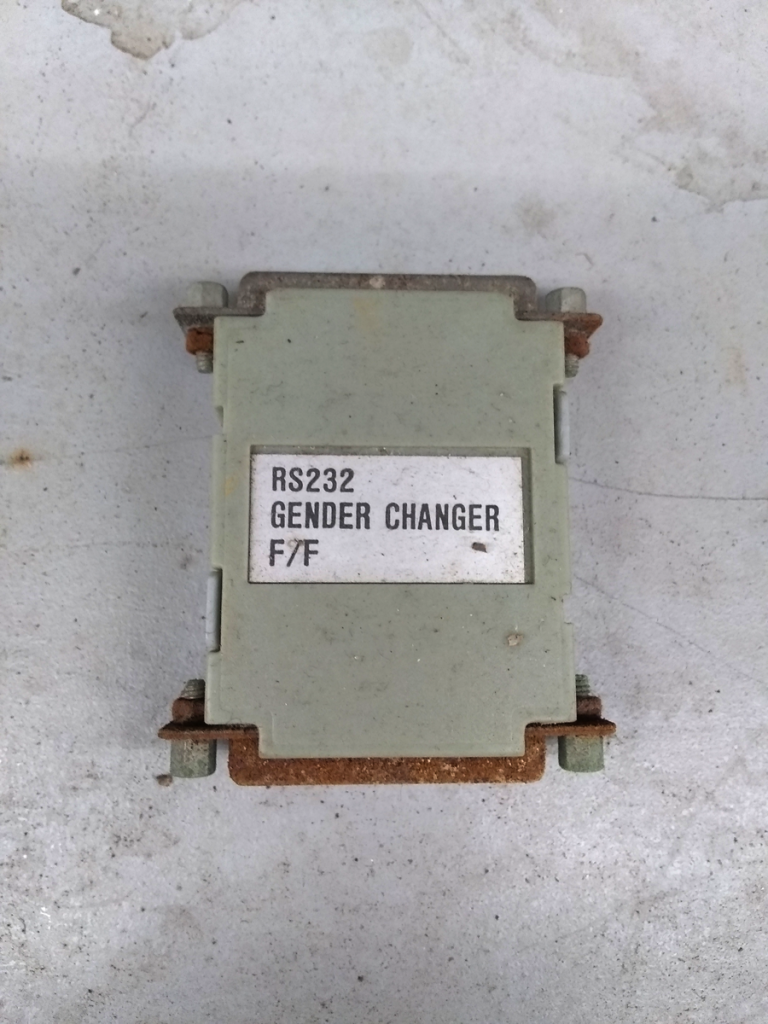
Not presented entirely without comment, as it’s hard to contain the urge toward snark. Yes, we know what this is and why it’s useful; yes, we know what they mean by “gender” and how F/F looks the same but changes things. Yes, yes.
At any rate: the cables which once needed this adapter are gone, as is the equipment it carried electronic messages to and from. Now we just have a block of metal and plastic and the opportunity to squint and say, “I’m not sure that’s how that’s supposed to work.”
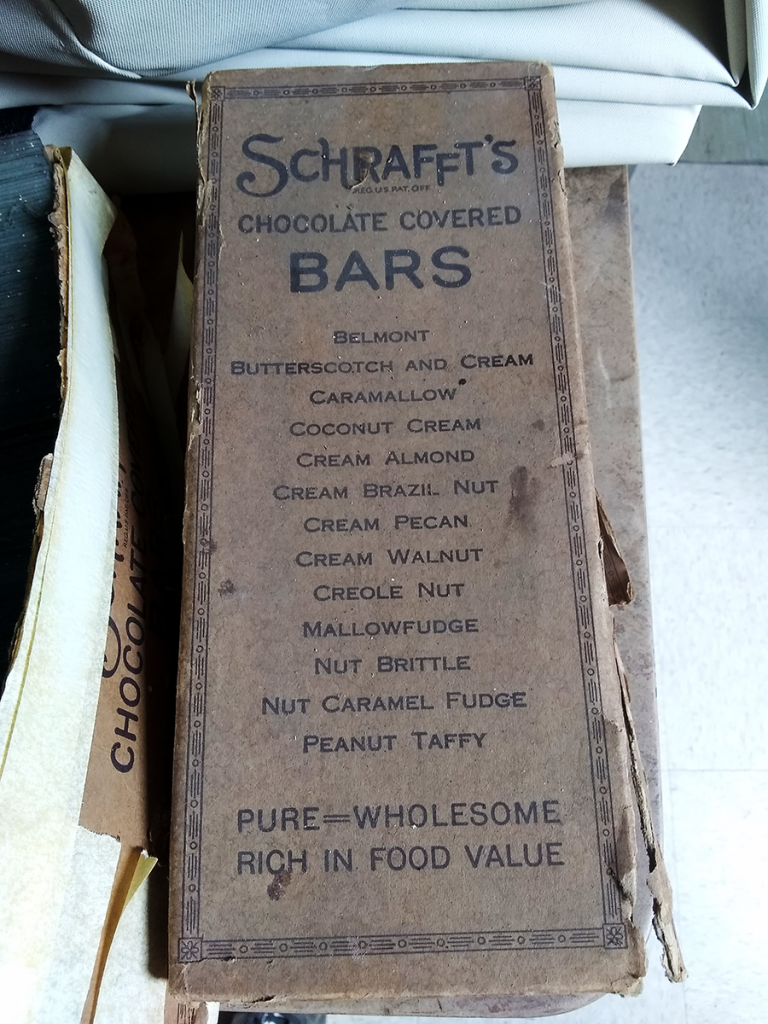
No one expects an antique box of chocolate bars – a Boston-based brand which went out of business in 1981 – to contain those candies anymore. We reuse boxes all the time, and the key factors are size and durability. D-cell battery boxes are in relatively high demand, for example; good size and sturdy. Chocolates boxes, it seems, were once just right for storing lots of glass plates. This was so long ago, though, that the original use has become somewhat obscure. (The glass plates. No one’s confused about the eventual fate of the chocolate bars.) Now the boxes are more intriguing than their contents.
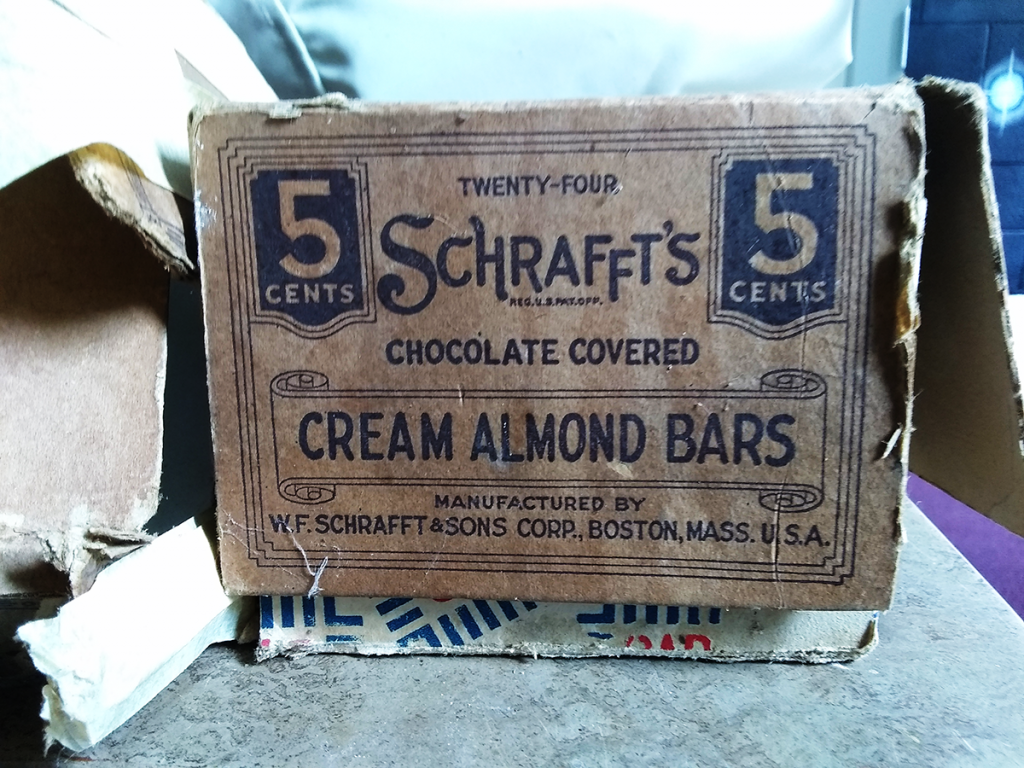
Idle thoughts bubble:
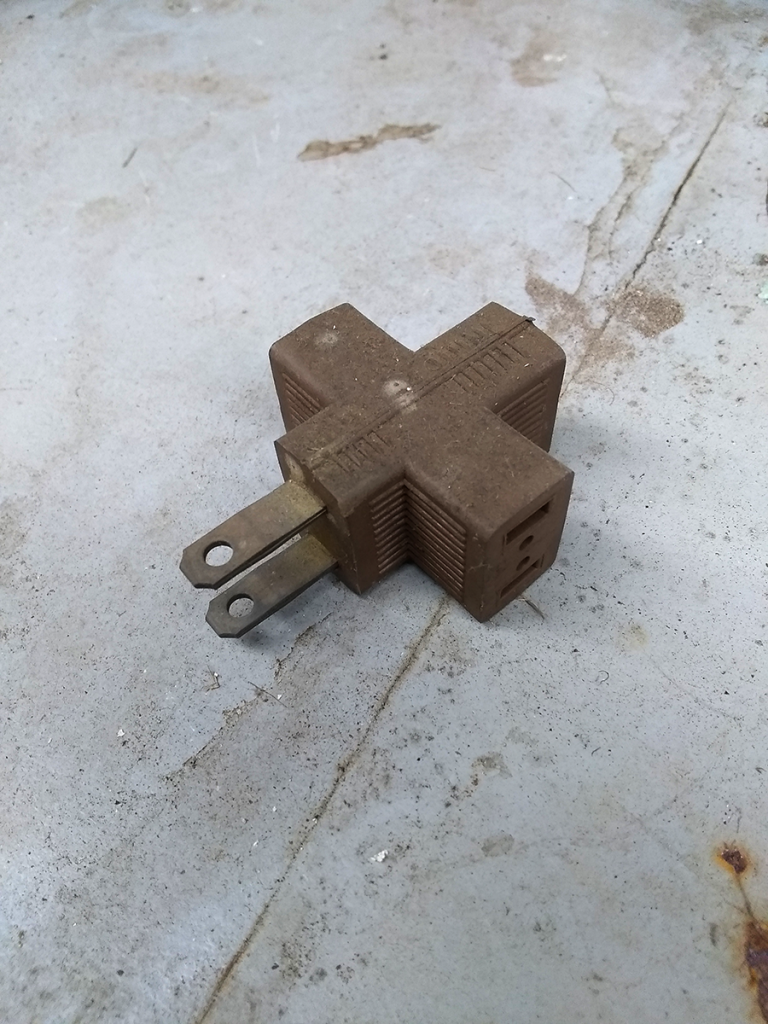
At some point, this little adapter for converting a single electric wall receptacle into three seemed like a clever and useful idea. And, let’s note: despite the fact that it screams “Peanuts Xmas tree fire hazard,” it is, in fact, still in good or at least unmelted shape. Not that anyone’s plugging it in to test.